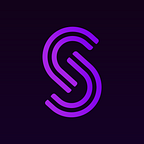Introducing SODIUM — an open-source platform for instant NFT liquidity
SODIUM Protocol is set to take a giant leap in the next few days, where we’ll be welcoming Punks, Apes and other NFT collectors, together with our liquidity providers, to the platform. Let’s lend, borrow and disrupt the NFT market, together!
Our team has been working hard on SODIUM for months on end; after testing the key features and mechanics, we think it’s finally time to share a bit more about what we’ve been up to — we’re excited to share these details in the article below!
What is SODIUM?
Sodium is a non-custodial liquidity market protocol, which enables users to effortlessly lend, borrow, and earn interest with their digital assets. Depositors providing liquidity to the protocol may earn passive income, while borrowers can procure liquid funds in an NFT-over-collateralized manner.
SODIUM unlocks the financial value of an NFT by enabling users to get instant access to a liquidity pool based on an automated NFT asset valuation.
How does SODIUM work?
Imagine you’re the owner of NFT BAYC #7495. It’s not just a fancy-looking Ape or PFP, but an asset that comes with utilities. At the time of writing, the average sale price of BAYC is 60.7 ETH. That is a tremendous amount of value locked!
SODIUM allows you to borrow liquidity by having your current NFT asset uploaded to the protocol as collateral. By doing this, you will receive liquidity, aka working capital, without selling the existing asset and ensure a solid foundation for future investments.
After connecting your wallet to the SODIUM Protocol, you will see your NFTs in the dashboard, showing each asset’s price estimation, borrowing limit, and APR.
For accurate price estimation, SODIUM uses a proprietary technology called the Fair Price Engine™ (FPE). The FPE shares NFT price evaluation data with the Liquidity Pool.
If you would like to borrow liquidity against your NFT, simply choose an amount to borrow that is within the borrowing limit. As always, make sure not to borrow too much, which would put you too close to the limit; you can keep an eye on how close you are to your borrowing limit by checking your loan ‘Health’.
Health indicates how “safe” your loan is, defined as the proportion of total deposited collateral against the total value of the loan. Health increases or decreases based on the fluctuation in value of the deposited asset vs. the value of the amount borrowed.
After the borrowing amount is selected, it’s time to confirm the transaction on your dashboard and watch your wallet grow. Your NFT is then transferred to the SODIUM NFT Pool; in return, the SODIUM smart contract will issue sodNFT, which proves that you own the NFT. The sodNFT will be transferred to your wallet together with the borrowed liquidity from the SODIUM Liquidity Pool.
That’s it. Now you have cash for apeing! Time to make 10x flipping some crypto…
When you’re ready to repay, return your borrowed liquidity along with the accrued interest. After the funds have been successfully transferred, the sodNFT is then exchanged for your BAYC NFT.
Congratulations!
You know now the basics of the SODIUM Protocol!
We have lots more exciting protocol details to share with you over the next few weeks, like the basics of:
- Depositing
- Earning
- The Fair Price Engine™
- The Liquidation Lottery
- Liquidity Mining, and more!
— — — — — — — — — — — — — — — —
Do you think it’s time to unlock the financial value of NFT assets?
Share your thoughts in the comments!
Follow us on Twitter and Telegram
Join the discussion on Discord
[And clap your hands if you want to read more great articles!]
